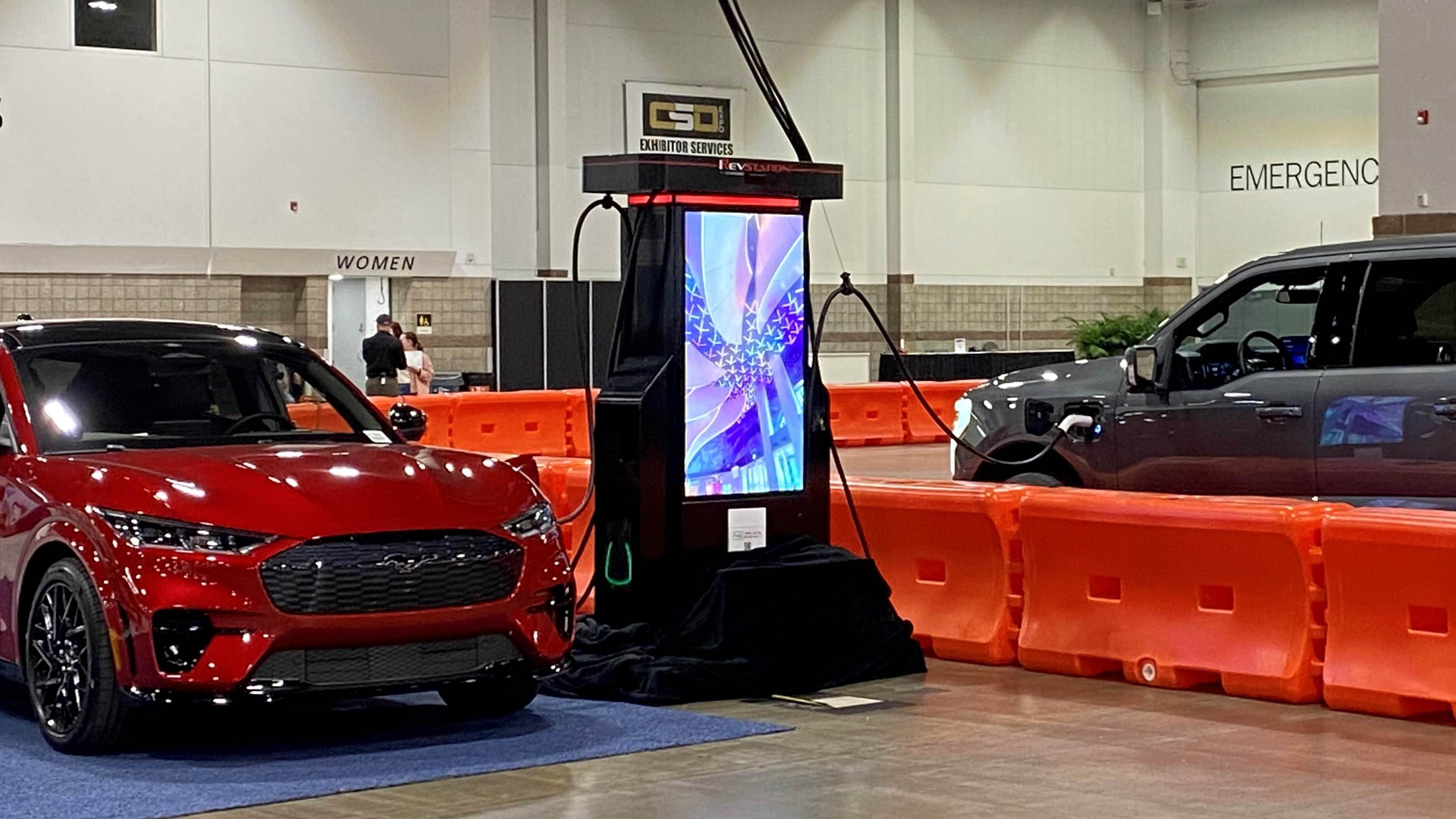
The adoption of electric vehicles continues to soar, and consumers now have a variety of options when it comes to electric vehicle selection from plug-in hybrid vehicles (PHEVs) to fully electric-powered vehicles. Future forecasts are bold—with the increase in electric vehicle adoption and new regulations put forward by policymakers, EV car sales are expected to increase significantly in the next years. And with the total cost of EV ownership now hovering below internal combustion engine vehicles, not to mention the lure of greener pastures, the value proposition for consumers continues to rise.

The landscape is clearly changing, though barriers to broader adoption exist. Among these barriers is the EV charging infrastructure, an area where growth has been slower to materialize. In fact, most charging for light-duty vehicles today happens at the single-family home.
Power Is Information
That said, EV charging stations are far from invisible to the public eye. We see them popping up in commercial spaces, notably in retail environments. Several states, including California, have passed regulations that require a certain percentage of parking spots to support EV charging. These regulations and other incentives such as tax rebates are influencing corporate businesses to install charging stations on their properties. In addition, federal government regulations, such as the Inflation Reduction Act, have built-in funding for EV charging infrastructure.
Another trend is taking shape that brings EV charging into an exciting new realm: the ability to display dynamic media content to consumers. These emerging capabilities introduce opportunities for businesses and advertisers that don’t exist with traditional EV chargers, which essentially function like gas pumps that feed power instead of fuel to electric vehicles.
Smart and connected Level 2 AC chargers and DC fast chargers change the game for everyone. Both are IoT-capable equipment and provide connectivity for value-added services beyond simple charging. That includes a direct path for targeted, dynamic digital content and advertising on a variety of display sizes, as well as connectivity for smart energy management, infrastructure, and device management services, including optimized energy flows, remote monitoring, configuration, and over-the-air software updates.
[DOOH, Digital Signage Power EV Charger Advertising Network]
All of this creates a wide-open field of new business opportunities for AV integrators, as well as companies that equip Level 2 stations with displays, digital signage software, media players, and intelligent electrification solutions that can incorporate batteries, edge devices, and cloud services.
Installation Skillsets
Contractors installing EV charging stations with integrated kiosks will require a broad skillset that extends beyond the integrated AV technologies. As with most AV jobs today, an inherent knowledge of IT and networking is necessary to enable bidirectional connectivity for media content, energy management, and system monitoring, among other services.
No one gets excited about charging a vehicle, but the ability to target visual content to drivers and passengers who interact with the charging station opens intriguing new opportunities for revenue generation and improved user experiences.
Expertise with electrical infrastructure is also paramount. Level 2 and DC fast chargers are high-power equipment that require compliance with safety requirements (such as UL certification for equipment and National Electric Code for installation). The impact of the charging infrastructure on the overall facility load will be consequent.
Level 2 charging stations offer a much more cost-effective approach than DC fast chargers for these customers (cheaper equipment and cheaper installation), and are especially viable for brownfield environments with existing electric infrastructure. Connections to traditional utility panels are simple, and the charging station and kiosk are adaptable to a variety of electrical circuits. The ability to set a physical switch to 40 amps when working with a breaker equipped with 50-amp circuits offers a cost-effective way to deploy the charging infrastructure without requiring a complete electrical overhaul.
Initial site surveys will provide detailed insights into electrical and networking requirements provided for the infrastructure and kiosk. Palmer Digital Group, whether self-installing EV kiosks or working with third-party contractors, begins each job with an extensive site survey that brings together the essential research prior to the design and installation of the charging infrastructure. That includes producing site readiness documents, confirming equipment needs for the kiosk, and evaluating potential IP, Wi-Fi, and/or Bluetooth connections for network and cloud connectivity.
The site readiness process for an EV station has some unique attributes. Like an outdoor digital menu board installation, contractors will trench for power and data lines upon confirming the proper location. Most projects will also involve a permitting process in compliance with local ordinances. The same preparation phases will also help the contractor confirm timelines for installing the EV station, from procuring third-party equipment to shipping and receiving logistics.
The technology specified for the kiosk will also play a role in how power and data connections are prepared and established. IoTecha’s electrification solutions, for example, operate on 220-volt infrastructure. This requires trenching for two-inch conduits to effectively power the infrastructure and kiosk, and a separate 110-amp line for data.
Cat6 network category cable is required to carry dynamic media content to the player, which can be a standalone hardware media player or an SoC (system on chip) display. SoC solutions offer one less point of failure. EV charging kiosks from Palmer Digital Group and other vendors will typically provide housing inside the cabinet for a media player and/or a Bluetooth router. SoCs are typically the safer choice, as EV charging stations are often installed at some distance from the source. This also ensures dynamic content is transmitted over the cloud.
New Revenue Opportunities
What’s perhaps most compelling about EV charging stations is what seems like a continuously expanding spectrum of business models. We see smaller retail stores that don’t own the parking working with ChargePoint operators to manage the backend technologies. We see larger networks developing where business owners own and operate the infrastructure themselves. These businesses that invest in infrastructure reap the benefits of tax credits and utility subsidies.

Then there are the very progressive adopters who leverage the charging infrastructure to provide value-added services, drive foot traffic, and increase customer loyalty. No one gets excited about charging a vehicle, but the ability to target visual content to drivers and passengers who interact with the charging station opens intriguing new opportunities for revenue generation and improved user experiences.
We see dynamic out-of-media coming to fruition in retail environments that link charging content with in-store advertising, including coupons and other promotions. The ability to bring in other revenue sources through DOOH advertising adds another potential new revenue opportunity for those investing in larger EV charging networks, including those that span over multiple sites.
Contractors in charge of installing the systems can also investigate additional revenue through post-installation managed services. “Smart” Level 2 charging stations with adjustable power requirements offer interesting opportunities.
For example, IoTecha’s cloud-connected edge devices provide monitoring capabilities for remote analysis and troubleshooting that ensure reliability, charger availability, and end user reassurance. That includes the ability to remotely control, configure, reboot, and upgrade chargers, reducing operational and maintenance costs while providing greater visibility into system health and performance. These same solutions can also enable advanced opportunities for vehicle-grid integration service, from frequency regulation to providing greater capacity through bidirectional power transfer.
We discussed earlier how EV charging stations, particularly AC models, are ripe for integration into existing brownfield environments. We like to think of EV charging as a greenfield opportunity in the broader sense. The above examples only scratch the surface; the opportunities are endless, whether for a contractor managing design and installation, the business owner developing new customer-facing revenue models, or the ad agency seeking to target EV demographics.







